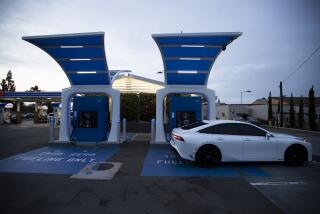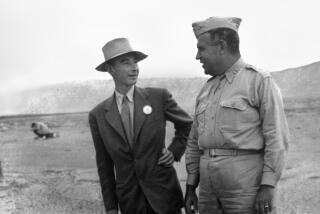Livermore is picked to build new H-bomb
Lawrence Livermore National Laboratory on Friday was declared the winner in a competition to design the nation’s first hydrogen bomb in two decades, a major step in restarting production of nuclear weapons.
The Bush administration said the program would improve the U.S. stockpile’s reliability, security and safety and would allow for a reduction in the thousands of weapons held in reserve for a potential war.
Critics reacted sharply, saying the program sent the wrong international message when the U.S. was trying to stop the spread of nuclear weapons.
Key members of Congress said the program was moving too fast.
“I have serious concerns with the process leading up to today’s announcement, and with the priorities of the Department of Energy,” said Rep. Peter J. Visclosky (D-Ind.), chairman of the appropriations subcommittee that would pay for the program.
“Although a lot of time and energy went in determining the winning design for a new nuclear warhead, there appears to have been little thought given to the question of why the United States needs to build new nuclear warheads at this time,” he said.
The award culminates a frenetic competition held since 2005 between Livermore in the Bay Area and Los Alamos National Laboratory in New Mexico. Sandia National Laboratories, which provides engineering for the arming system, was part of both teams, and its California branch will continue the program with Livermore.
Research on some aspects of the Los Alamos design also will continue and may be included in the Livermore bomb, said Tom D’Agostino, acting chief of the Energy Department’s National Nuclear Security Administration.
Livermore won largely because of its conservative approach, assuring it could build the bomb with no need for underground testing.
The U.S. temporarily halted underground testing in 1992 during the George H.W. Bush administration and then indefinitely during the Clinton administration. The program will spend eight to 12 months assessing the cost, schedule and scope of the effort, D’Agostino said.
The victory is an important boost for Livermore, which is managed under contract by the University of California.
“I can’t tell you how honored the California team is,” said Bruce Goodwin, chief of the nuclear weapons program at Livermore. “I am personally humbled by this.”
More to Read
Sign up for Essential California
The most important California stories and recommendations in your inbox every morning.
You may occasionally receive promotional content from the Los Angeles Times.











